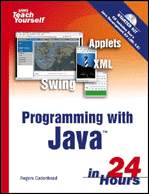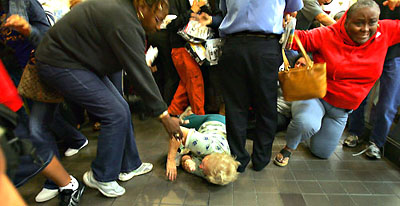John Derbyshire: Jennifer Aniston Too Old to Be Hot
I'm the unnamed reader quoted by Jonah Goldberg on the National Review weblog this afternoon. I sent the same loaded question to 12 of the magazine's writers and editors:Do you share John Derbyshire's belief that females are only desirable to look at nude from the ages 15 to 20?
Derbyshire, a conservative columnist for the magazine and an infamous contrarian, declared earlier this week that Jennifer Aniston is too old to be attractive in the nude:
Derbyshire's weird belief that his standard of female beauty is universal could be dispelled by a five-minute web search on any number of terms, all of which I will leave to the imagination. Different strokes for different folks.
 But when he asserts that the ideal nude could be as young as 15, the 60-year-old writer ventured beyond the realm of too-much-information to the lecherous land of Lolitaville. After Derbyshire's column was called out by Andrew Sullivan, I was dismayed that none of his colleagues criticized the hypothetical appreciation of jailbait.
But when he asserts that the ideal nude could be as young as 15, the 60-year-old writer ventured beyond the realm of too-much-information to the lecherous land of Lolitaville. After Derbyshire's column was called out by Andrew Sullivan, I was dismayed that none of his colleagues criticized the hypothetical appreciation of jailbait.
Many of these writers are self-professed social conservatives, so vigilant against the "coarsening of our culture" that they deplore the word sucks and the lack of a pregame handshake at the World Series. These people take offense like Rush Limbaugh takes Oxycontin.
How could none of them use their bully pulpit to fulminate against an adult objectifying teens below the age of consent? You can't pick up a paper without reading another gut-wrenching story about a loathsome babysitter chaser for whom such feelings are not hypothetical at all.
Derbyshire wrote earlier this year that homosexuals shouldn't "advertise their preference to high-school students, as they do in some parts of this country."
He advertised his preference for high school students, and so far the closest anyone has come to condemnation is this comment by Tim Graham:
At the risk of being tarred as a total old-married geek, old married guys probably shouldn't be nostalgic for the nude female figure, age 15-20.
Adam Curry Caught in Sticky Wiki
 Former MTV veejay and podcasting entrepreneur Adam Curry appears to have been caught anonymously editing the podcasting entry on Wikipedia to remove credit from other people and inflate his role in its creation.
Former MTV veejay and podcasting entrepreneur Adam Curry appears to have been caught anonymously editing the podcasting entry on Wikipedia to remove credit from other people and inflate his role in its creation.
When someone edits Wikipedia without logging in to a user account, the IP address is recorded to guard against abuse. Four times this year, an IP address controlled by Curry, 82.108.78.107, has made revisions involving the early history of podcasting.
On Feb. 5, someone at Curry's address removed a sentence crediting Stephen Downes with distributing MP3 audio files over RSS:
The recovery of MP3 links from distributed weblogs and distribution of the aggregated list using RSS had been demonstrated by Stephen Downes's [5] Ed Radio [6], launched June 9, 2004.
On the same day, Curry wasn't getting sufficient props in another sentence, "Podcasting was developed, according to Curry [7] in August, 2004," and it was edited to correct this injustice: "Podcasting was developed thanks to Adam Curry's original iPodder script and the success it fostered since [7] August, 2004."
On Nov. 3, a sentence was removed that credited Kevin Marks with programming a podcasting script:
At the first Harvard BloggerCon conference, October 4-October 5, 2003, Kevin Marks demonstrated a script to download RSS enclosures to iTunes and synchronise them onto an iPod[6], something Adam Curry had been doing with Radio Userland and Applescript.
This paragraph also got the axe:
Curry's and Winer's podcasts, including several months of collaboration they called "Trade Secrets," spread interest in podcasting among other widely-read bloggers. Amateur blogs and open source developers continued as important factors in the popularization of podcasting before and after professional broadcasters and entrepreneurs with business plans adopted the form.
These edits were spotted by Marks and Wikipedia editor Jeremy Hunsinger, who remarked, "For some reason a person at 82.108.78.107 keeps removing vital material that explains some of the history of the development of podcasting."
I was appointed to the RSS Advisory Board in 2004 at the same time as Curry, so you might expect that I'd have a personal perspective on the glory hog. But we've never really worked together. The only contribution he made on the board, appropriately enough, was to write his member bio.
By my recollection, Curry sparked the podcasting boom in three significant ways: He persuaded Dave Winer to add the enclosure element to RSS 2.0 in 2001, created a popular podcast and released an Applescript hack as open source that led to the first standalone podcasting client. But he was never a developer on iPodder (now known as Juice), so he might want to squeeze those guys into the encyclopedia on his next editing run.
Identity Thieves Mastered My Card
I just completed a 10-day ordeal dealing with fraudulent charges on two credit cards. On Friday Nov. 18, my card donated $1.89 to the Hong Kong chapter of the relief organization Médecins Sans Frontières. The following Monday, my wife's card spent around $190 with the Ito-Yokado retailer in Japan.These charges were discovered within 72 hours as I reviewed my MasterCard account online. I had just paid for wireless Internet access at a Disney World conference center on Nov. 20, and a day later I became retroactively paranoid about providing my credit card details to the strongest wireless access point in range of my laptop.
That decision didn't have a chance to come back and haunt me, because I was already being robbed across Asia. I cancelled the cards.
I'd like to figure out how this happened. The two cards have different numbers, have never been lost and aren't used at the same merchants.
MasterCard announced in March that 40 million credit card numbers were exposed by a security breach at a Tucson processing center, so my best guess is that thieves hit numbers stolen from a database (rather than my pants).
But how could both of our cards get hit on different numbers, and what kind of self-respecting identity thief makes a $1.89 test charge and doesn't follow up with a weekend spending spree?
My bank didn't provide any more details on the charges, which takes all the fun out of being victimized by international criminals. I wanted to find out what they bought from Ito-Yokado, a huge Japanese retail chain that owns a majority interest in 7-Eleven, and where my $1.89 donation will be used.
New Book: Programming with Java in 24 Hours
I just launched the web site for Sams Teach Yourself Programming with Java in 24 Hours, my 21st computer book since I began writing them in 1996. I'm not sure how this happened. I went to college to learn interpretive dance. This is the fourth edition of the book, updated to cover Java 2 version 5. I wrote the first in a 17-day haze in 1997, covering Java 1.1 and its class library, which is less than one-tenth the size of the Java 2 class library today.
This is the fourth edition of the book, updated to cover Java 2 version 5. I wrote the first in a 17-day haze in 1997, covering Java 1.1 and its class library, which is less than one-tenth the size of the Java 2 class library today.
Over the years, the book has grown to 558 pages and been heavily reworked several times to reflect changing priorities among Java's several million programmers. Back in 1987, Java was touted as the ideal language for designing interactive web content like games and animation, so the book covered applets extensively. Today, Macromedia Flash has all but killed applets in the browser -- the last major web site using Java applets, ESPN, switched to Flash within the last year for its fantasy sports and live game stats. Java coders use the language primarily on Internet servers, database programs, web applications and middleware.
The fourth edition devotes new chapters to two subjects that weren't even around eight years ago: XML and XML-RPC. I wanted to get XML-RPC into the book so badly that I suspended the laws of time and space. Each of Sams' 24 Hours books contains 24 one-hour tutorials, which add up to a day under a timekeeping system established by the Babylonians more than 1,000 years ago. I broke that system to make room for Hour 25, "Creating Web Services with XML-RPC."
I cover XML-RPC programming using Apache XML-RPC, an open source Java class library that makes it easy to move data around from program to program over the Internet. I rely on it all the time -- this week, I transferred thousands of database records from a Frontier server to an XML-RPC server on my desktop machine to a PHP/MySQL database on Workbench.
Each chapter ends with two programming exercises solved on the site. The Hour 25 exercises are an XML-RPC client, server and request handler for the XML-RPC interface of Advogato.
Even if you don't buy the book -- a possibility I hate to even contemplate -- those two applications demonstrate how to make and receive XML-RPC requests in Java using Apache XML-RPC.
Terrorists Reap What They Sew
Congressman John Carter, R-Texas, has found a new area of concern for the nation's homeland -- uniforms worn by U.S. Customs and Border Protection agents are made in Mexico:If we're manufacturing uniforms in Mexico, what's to stop someone from walking across the border in a Border Patrol uniform? How do you know who are our guys and who are their guys?
Don't tell Rep. Carter, but Al Qaeda probably has the operational capabilities to sew a shirt and pants. If our border security can be fooled by the standard action-movie trick of taking someone's uniform, making the clothing in Dubuque isn't going to solve the problem.
Black Friday: More Than I Bargained For

Once the doors opened just before 5 a.m., hundreds of people poured through, breaking down the police tape. Dozens of others cut the line and ran through the exit door before Wal-Mart employees were able to stop them.
Inside, Wal-Mart workers were throwing boxes with laptops and portable DVD players to the people who were pushing and shoving to get the merchandise. A lone sneaker lay on the floor, lost by an anxious shopper in the scrum.
My name is Rogers and I am a recovering doorbuster.
A few years ago during a Thanksgiving holiday in Dallas, my wife and her sisters got up before dawn Friday morning to go doorbusting, hitting the sales at Target and other retailers on the biggest shopping day of the year.
I thought this sounded nurse-a-shotgun dreadful, but when I saw some of the prices at computer stores, I became one of these sad, bargain-crazed freaks.
The aptly named Black Friday gets larger, longer and more dangerous each year. I heard a radio report from a Wal-Mart where 5,000 people lined up outside before it opened. Some stores have even begun opening on Thanksgiving Day, spoiling one of the last commerce-free holidays.
Another former doorbuster:
Black Friday is the most terrible day of the year. I can't believe what kind of human beings go out on this day and start fights and are that greedy and materialistic to get up this early and do these things. ... I'm sickened by what I was exposed to today. I don't even want to go into detail about the things I saw and the things that were uttered out of people's mouths.
I don't know what possessed me to get up at 4 a.m. for a knockoff MP3 player, six-format digital photo card reader and other computer peripherals, most of which remained unopened the next time Black Friday rolled around. The only thing I can recall needing -- from any of these sales -- was a 100-pack case of blank CDs ($0.01 after a $9.99 mail-in rebate).
Two years later, I still have 70 CDs left.
When I was doorbusting last year at CompUSA in Jacksonville, I decided that no amount of savings is worth standing in line for an hour within the armpit fallout cloud of computer aficionados, many of whom skipped a shower so they'd have the best possible chance to buy one of five $49 laser printers.
Update: Bill Lazar survived a Black Friday riot at a Mountain View, California, Wal-Mart: "People raced to the consumer electronics department as the store opened at 5 a.m., jumping over counters and pushing over a display case. Store managers, downplaying the scrum afterwards, needed help from Mountain View PD to restore order."
CNN Dicks Cheney with Subliminal Messages
The Drudge Retort has obtained video footage that proves the superimposition of an X mark over Vice President Cheney during a televised speech Tuesday wasn't just an innocent technical glitch by CNN, as claimed by anchor Daryn Kagan-Limbaugh.In a story impacting hard across the conservative blogosphere, Matt Drudge reported Tuesday on a "large black 'X' repeatedly flashed over the vice president's face!"
The X, which appeared for two frames displayed over one-fifteenth of a second, turns out to be a small part of a series of extremely hard-to-detect subliminal messages lasting more than 10 minutes during the speech.

If you watch the 11-minute, 8-second video closely, you'll see that Michelle Malkin and other seasoned observers of politics were right to suspect that someone at the Communist News Network was attempting to subconsciously sway the public against the vice president.
If this kind of thing is standard practice at the network founded by patchouli-smelling medicinal hemp advocate Ted Turner, it may explain the 19 percent approval rating that Cheney currently enjoys in the polls.

